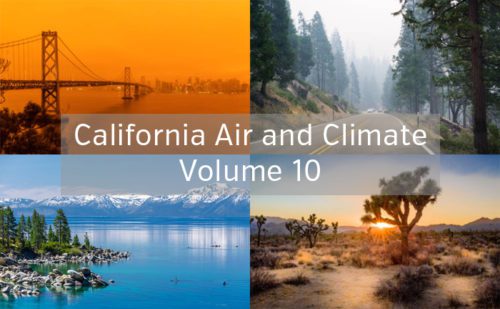California Air and Climate: CARB Reports Continued Declines in Greenhouse Gas Emissions; Tulare County Settles Lawsuit Involving Livestock Emissions
September 2019
California Air and Climate, Vol. 10
CARB Reports Continued Declines in Greenhouse Gas Emissions
The California Air Resources Board (CARB) is reporting that in 2017, greenhouse gas (GHG) emissions for the state were 424 million metric tons (MMT) of CO2 equivalent. This is a decrease of 5 MMT from 2016 emissions and is 7 MMT lower than the state’s 2020 target of 431 MMT (equivalent to 1990 emission levels). Continuing recent trends, the electric generating sector is responsible for 6.2 of the 7 MMT in emission reductions, with non-GHG emitting power generation surpassing 50 percent of the state’s energy supply for the first time. Emissions from transportation increased slightly from 2016 while other sector emissions, including industry, residential, and agriculture, remained relatively stable. CARB touts that the state has been able to achieve these reductions amidst continued population growth and a state-GDP that grew by 3.6 percent in 2017.
While this marks the second year that the state’s emissions have been below 1990 levels, much work lays ahead to meet the state’s 2030 target of 40 percent below 1990 emission levels. This will require annual reductions of approximately 14 MMT per year, almost three times the reduction achieved in 2017. The two largest emitting sectors, transportation and industrial – responsible for 40 and 21 percent of emissions, respectively – are likely top targets for reductions.
Tulare County Settles Lawsuit Involving Livestock Emissions
Last month, Tulare County settled a lawsuit with several environmental groups that challenged the County’s environmental impact report (EIR) and approval of an Animal Confinement Facilities Plan (ACFP), a related General Plan amendment and a Dairy Feedlot and Dairy Climate Action Plan. The environmental groups alleged that the County failed to adequately consider and mitigate GHG emissions associated with animal feedlots and other cattle operations in the EIR. Cattle are a significant source of methane, a high global warming potential GHG. Under the terms of the settlement agreement, the County agreed to hire at least one full-time employee to monitor and enforce the ACFP, track existing dairies’ compliance with the ACFP, as well as dairies’ implementation of other GHG reduction measures. The County must also conduct site inspections of at least 15 percent of dairies within the County on an annual basis, and prepare annual reports regarding total dairy GHG emissions. Once CARB adopts statewide regulations to reduce dairy and livestock methane emissions, as required under SB 1383, the settlement agreement will terminate.

